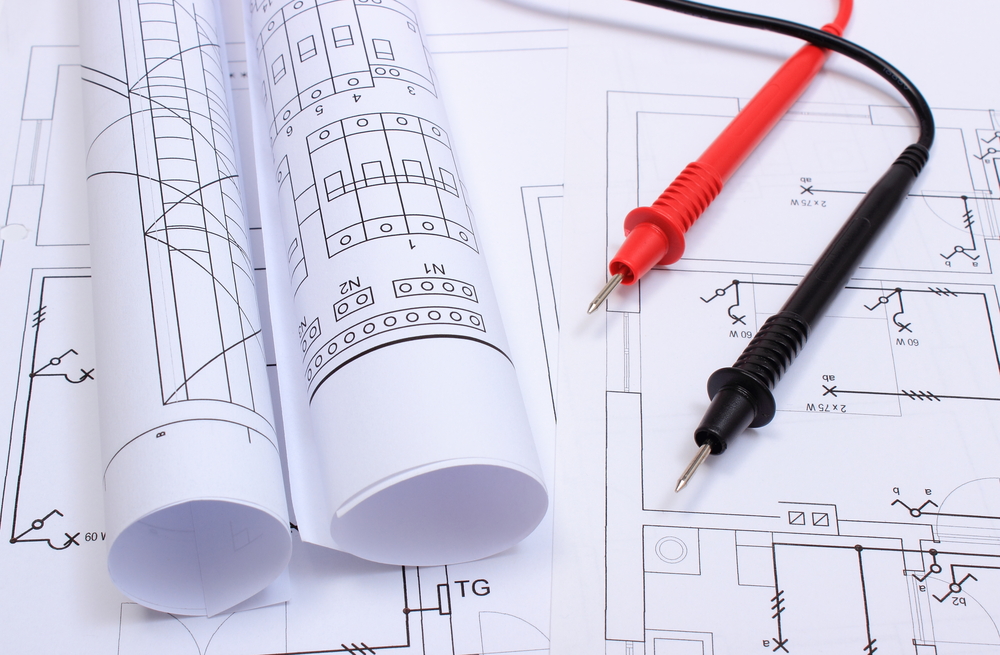Electrical Contractor
Our engineering teams can determine what should be the ideal electrical capacities your site must have for various projects to ensure precise sign-offs.
We don’t believe in over-engineering and only focus on efficiency. We utilize the resources with efficacy and don’t increase energy consumptions.
One of our competitive advantages is a highly agile yet flexible design process. With it, we are able to deliver fast turnarounds better than anyone within the MEP industry.

In the city of Chicago, every new project associated with building construction or modeling has to be a design concept that is developed by the owner of that building. This design needs to serve as a platform on which the architect is able to develop various building plans. These plans must contain all the required information which the local authorities or state government can inspect and approve. Only after this approval, the process of remodeling or construction can begin.
As all residential and commercial or even industrial buildings have an array of different electrical systems, these plans must have an electrical system design which ensures the installation and the remaining of the procedures follow all the building codes set by the National Electric Code and the state’s electric code as well.

The process of electrical design for each new building has to go through multiple crucial phases of development. The architect or designer can start the entire design process by understanding the project’s scope right in the beginning. The next step is to define all of the components with specific details. These components include areas of general office, equipment of power distribution and special machinery and these definitions have to be according to the industry standards. Next comes in is the arrangement of specific parts for the purpose of formation of the final presentation of the project’s electrical design.
The electrical design of any new building project has its own set of unique requirements. These requirements heavily rely on the project’s scope. The demands and requirements set by the clients along with the structural type of the building are two key factors in determining this scope. Any renovation of an old building will only require an electrical design for fusing the new wiring and blending it in with the current wiring system that already exists. However, in the case of a newly proposed electrical design, the scope becomes much larger in magnitude. The reason behind that is an entirely new electrical design is needed.
Based on the project type a new electrical design of the building may include the following:
Each new electrical design for a building project has to define all the general requirements. These general requirements are various items such as receptacle outlets of 120 volts that are present across the building. These receptacles aren’t meant for the purpose of serving any of those specialized loads. However, they are definitely meant for the purpose of general use. It includes wall receptacles, electrical equipment, and desktops. This equipment doesn’t come with any special requirements.
Some of the new projects might have specialized types of electrical systems and equipment. These systems need a special form of electrical circuitry. Such circuitry will serve only these systems and equipment. Some of this equipment includes vending machines, photocopiers, microwave ovens, and network servers. Because of the load requirements that these systems have and are mentioned by their manufactures as well, these equipment types might require individual wiring methods.
Lighting systems involve a lot of complexities and for this, they also require a lot of careful development time during the process of creating an electrical design. All the lighting fixtures, as well as their controls, serve to be the components of these systems. As per the National Electric Code, these systems of lighting need in-detail requirements documentation. These documents will exhibit whether or not the lighting systems follow the code and keep the energy consumptions under control.
The distribution networks for electrical systems provide details on how the electrical wiring is done across the building. The distribution network or EDS must include the primary switchboard that receives power directly from the facility’s utility along with all the linked segments such as panel boards which distribute the required branch circuits across the facility. The designing of this distribution system must also include the measurement of the facility's amperage load and values of short-circuits. These readings determine the total demand for electricity throughout the facility relying on the single components of the distribution network.
After the determination of various parts and applicable standards, the designer shifts his/her focus on assembling these parts for the development of an electrical design suitable for the project. In the past, these plans had to be drawn by hand in the forms of blueprints. However, these days Computer Aided Design (CAD) software is used to fulfill this objective. This way the digital plans become far easier to modify.
Nevertheless, these plans need to have all the references for the design and must include all the components with an adequate electric symbol. These electrical symbols allow the viewer to recognize them easily. For this reason, these symbols are very useful for the purpose of cost estimation as well as installation procedures.
The ANSI (American National Standards Institute) provides all the details associated with standardized electrical building plans to use in building project plans. However, it is not mandatory for all the projects to have all these symbols. Hence, the symbols that are used in a particular project need to include a list that has to be attached to the final design plan.
In some cases, it is obligatory to use a new symbol; for instance, if there is a case of a new device for energy-saving that hasn’t been developed yet. In such a scenario, the architect should create a symbol (new) for the design plan, and this must also be introduced in the list of all the symbols for the plan.
The plans for a new facility design can also feature the electrical designs as separate documents. For identifying electrical plans in an easy manner they need to be numbered and labeled appropriately. It is critical to note that architectural sheets differ from electrical sheets (E sheets). The plan for electrical design is usually presented in the following order,
Eradication of On-Site Combustion of Fuel : It can be achieved by replacement of gas and oil-fired equipment with electric powered units. The use of steam with Con Edison doesn’t resolve the problem. The reason behind that is the process of steam production is heavily carbon-based.
Reducing Carbon Footprint : It is essential for the power grid to ensure the reduction of the carbon footprint it has. Switching from heating that is combustion-based to heating that is done with electric equipment will eliminate these emissions especially if they come from clean power plants.
A significantly considerable barrier when it comes to electric heating in major states of the US is the high cost of electricity. A number of tenants do pay tariffs of more than 20 cents per kWh. In such a scenario there are a couple of complementary approaches which can assist in making electric heating more viable. One is increasing the equipment’s efficiency and the other one is reducing each kWh’s cost.
Adapting the Power Systems for Electrified Buildings : As we have previously mentioned that there is a very little advantage if architects make all facility systems electrical but the generation continues base on natural gas, diesel, and coal. Greener heating is only achievable when the source of power doesn’t generate any emissions. Some choices are solar arrays, wind turbines, and hydroelectricity.
Wind turbines and solar arrays recently have faced a lot of criticism due to their varying energy output, but you can solve it if you connect them with energy storage. This approach is mainstreaming in recent years because it is also becoming cheaper. For instance, in Australia, a number of large corporations are choosing a combination of storage energy and renewable sources. The reason behind that is this method provides much cheaper electricity as compared to the local grid that heavily relies on gas and coal.
The modern grids experience highest annual demand in summer days because of high temperatures because AC equipment is electrical in most cases. In the winters the demand is not the same because the heating systems rely more on combustion. This behavior can be reversed with the help of building electrification because by doing so demand peaks can take place on cold winter nights.
The structure of the power grid can also experience a slight modification, from centralized to distributed generation from the power plants. This will be very effective for small scale renewable systems as well as energy storage. Distributed electric systems can assist in reducing the overall operating cost of these power grids, and can also help in reducing the distribution and transmission burden by keeping consumption and generation closer to each other.
In the past decade, Nearby Engineers New York Engineers has been effectively transforming the energy distribution systems of various projects across different industries. we have helped a number of our clients shifting from combustions based energy systems to electric powered systems successfully and have not only allowed them to save a significant portion of their cost but have also assisted them in improving the overall efficiency of their facility.
No matter how much power you require for your building, NYE can prepare electrical design plans which will include an address your facility’s lighting systems, mechanical power, receptacles, diagrams of electrical risers, specifications, schedules for panel boards, and various other construction details. We have solutions to all your electrical projects no matter what type of voltage systems your facility needs.
We can assist you in coping with all the demands whether based on an emergency or normal power. All our designs are critically reviewed, signed for approval, and are also sealed our design engineering head. We can take care of all aspects of your electrical projects including landlord approvals, ensuring quality workmanship, accurate bidding of construction cost, and last but not least guaranteeing a smoother construction process.
Our team of engineering professionals and technicians can also use energy modeling for the purpose of energy usage estimation with breakdown to guide you on various components that are consuming the most of your energy. We can recommend a variety of energy systems for cost reduction like micro-turbines, solar panels, natural gas generators, cogeneration systems, and diesel generators systems wherever applicable and financially viable on a more project-based approach for increasingly customized services. NY Engineers have expertise in an array of different electrical engineering projects.